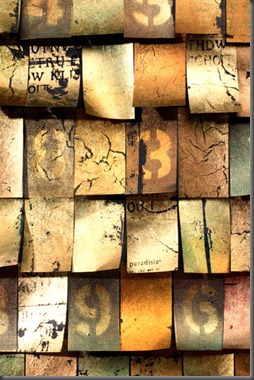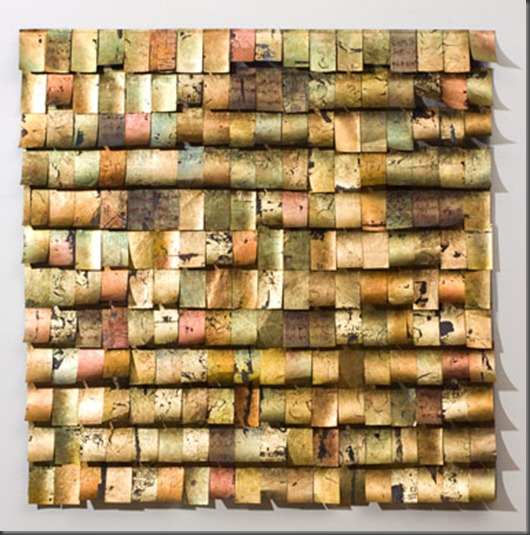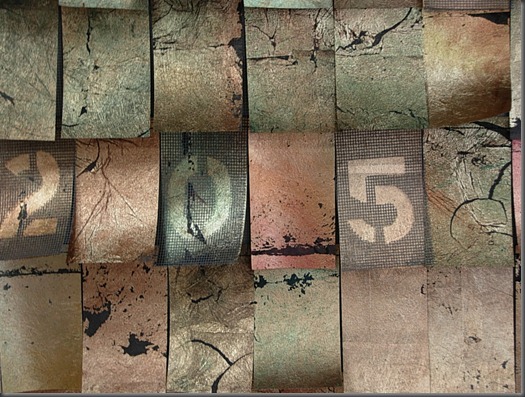When I started working with the “fluttering pages” idea, I envisioned translating ancient texts and lost languages into visual imagery. Then I began to realize that “old” is a relative term – in American culture much of what I remember from my early life in the 50’s and 60’s is now considered ancient times.
As I’ve worked on these two new pieces, I’ve been thinking about the fragments and details that we remember as we age. I have many vivid recollections about the various places I’ve lived and began jotting down all the addresses I could remember. To my surprise, I remembered many and incorporated these on Book of the Ancients 2: House Numbers.
Jeanne Raffer Beck, Book of the Ancients 2: House Numbers, 2011, 36” x 48”. Acrylic paint, gold leaf, synthetic fabric, fiberglass screening, thread.
Jeanne Raffer Beck, detail of Book of the Ancients 2: House Numbers.
Working on these pieces awoke many memories of place and my Pittsburgh childhood. I began to look at maps of the neighborhoods where I was born and lived until I was 11, when our family moved to New York State. Since my nuclear family is now all deceased, these recollections from my childhood are pleasing and surprisingly vivid.
Jeanne Raffer Beck, Book of the Ancients 3: Memory, 2011, 36” x 36”. Acrylic paint, gold leaf, synthetic fabric, fiberglass screening, thread.
It felt important to imply the recollections of early memories, so I stitched suggestions of recorded memories, perhaps from a personal journal, on some of the individual pages.
Jeanne Raffer Beck, detail of Book of the Ancients 3: Memory.





